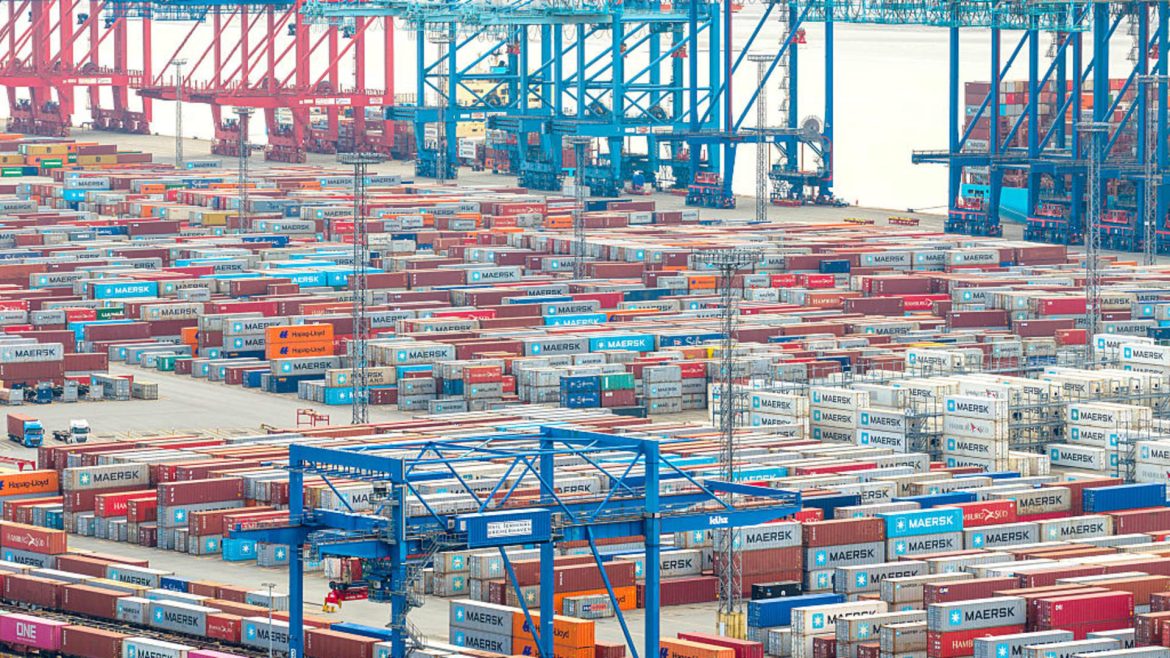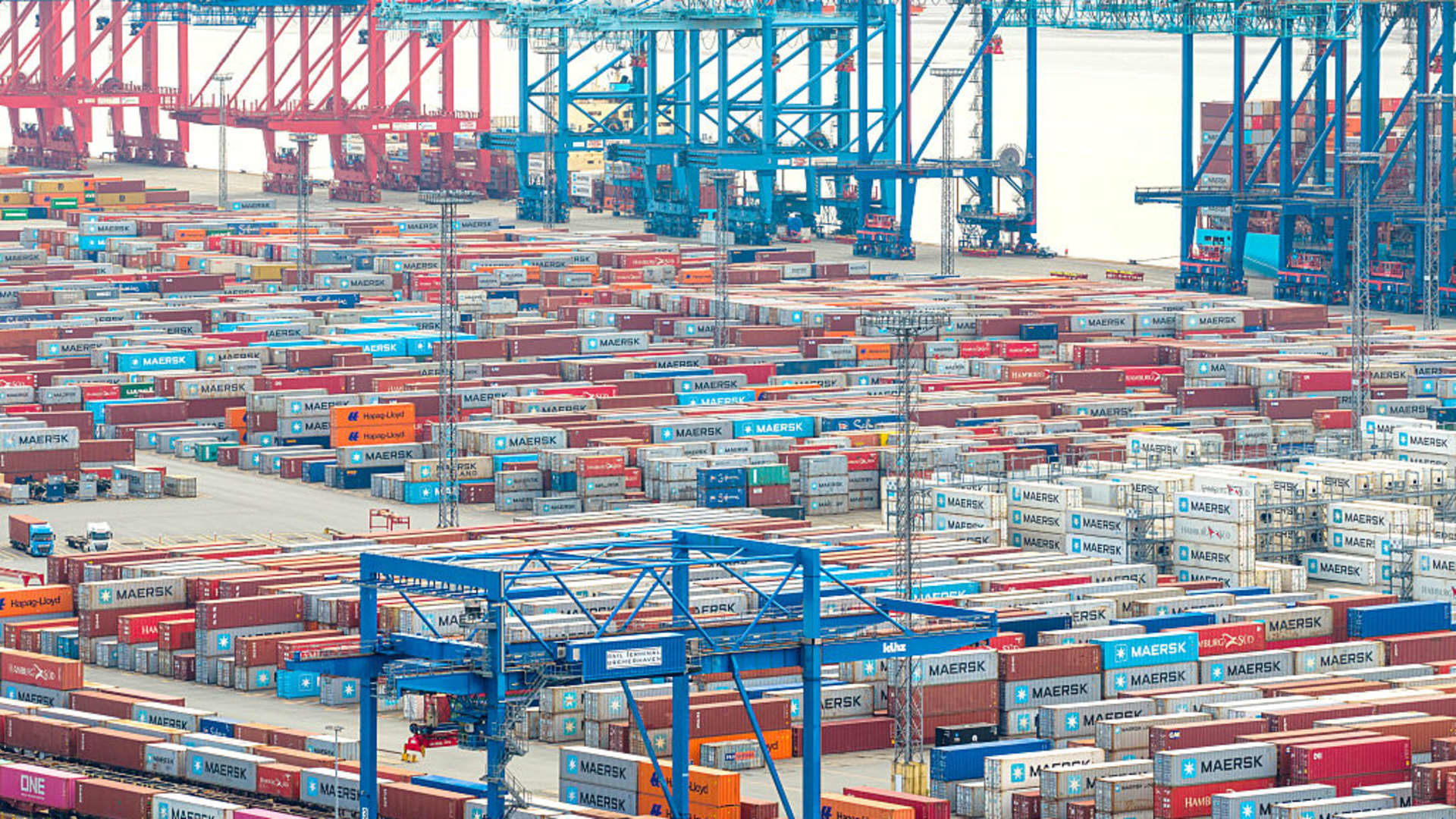The Shifting Sands of Trade: Analyzing the Impact of the U.S.-EU Trade Deal
Introduction: A New Chapter in Global Trade
The global economy is a complex web of interdependencies, where trade agreements often serve as the threads that bind nations together. The recent U.S.-EU trade deal, spearheaded by the Trump administration, has sparked intense debate and speculation about its potential impact on global trade dynamics. This report aims to dissect the anticipated effects of this trade deal, focusing on its implications for U.S. imports, the economic ripples across various sectors, and the potential for both challenges and opportunities.
A Tariff Simulator’s Grim Prediction: A Dip in Global Exports
The initial indications from a tariff simulator have raised concerns about the future of global exports to the United States under the new U.S.-EU trade deal. These projections suggest that the deal, as currently structured, may inadvertently create barriers that discourage international trade. The rationale behind such predictions is rooted in the imposition of tariffs, a central component of the agreement.
Tariffs, essentially taxes on imported goods, increase the cost of these goods for U.S. businesses and consumers. As these costs rise, demand may shift towards domestically produced alternatives, reducing the overall volume of imports from various nations. However, this could trigger retaliatory tariffs from other countries, leading to a trade war. The potential for such a scenario underscores the need for careful consideration and strategic planning in the implementation of the trade deal.
The Devil in the Details: Examining Key Provisions and Their Impact
While the broader strokes of the deal involve tariff reductions and streamlined trade procedures between the U.S. and the EU, the specifics of the agreement will have varying impacts on different industries. Trump’s specification of a 15% tariff on automobiles and “everything else” imported from the EU adds a layer of complexity to the analysis.
Automotive Industry: A Cornerstone Under Pressure
The automotive industry, a cornerstone of both the U.S. and EU economies, is particularly vulnerable to the new tariffs. The increase in cost, even if absorbed by manufacturers, could impact competitiveness and profitability. Furthermore, it could encourage manufacturers to relocate production facilities to the U.S. to avoid tariffs, potentially leading to job losses in Europe. The automotive industry’s intricate supply chains and global production networks make it particularly susceptible to the ripple effects of the trade deal.
“Everything Else”: Ambiguity and Uncertainty
The ambiguous phrase “everything else” adds a layer of uncertainty to the trade deal. This lack of specificity leaves room for interpretation and potential disputes, creating an environment of instability for businesses involved in transatlantic trade. The implications of this blanket tariff will depend heavily on the exact list of goods and how rigorously the tariffs are enforced. Businesses will need to navigate this uncertainty carefully to mitigate potential risks.
Exemptions and Inclusions: The Fine Print
Understanding which products are included or exempt under the agreement is crucial for accurately assessing its impact. If essential inputs or components used in U.S. manufacturing are subject to tariffs, it could negatively affect domestic industries, despite the intent to protect them. The original Trump Tariffs stated that U.S.-based content of certain imports from Canada and Mexico would be exempt, highlighting the importance of carefully reviewing the fine print of the agreement.
Winners and Losers: Identifying the Beneficiaries and Those at Risk
The U.S.-EU trade deal, like any major trade agreement, will inevitably create winners and losers. While the proponents emphasize the benefits of increased domestic production and job creation, it is important to consider the potential downsides for specific sectors and consumer groups.
Potential Winners: Domestic Producers and Certain Agricultural Sectors
U.S. manufacturers, particularly those competing directly with European imports, could benefit from the deal. The tariffs on imported goods create a price advantage for domestic products, potentially leading to increased sales and market share. Additionally, specific agricultural sectors in the U.S. may see increased export opportunities to the EU, depending on the negotiated terms of the agreement. This could provide a boost to the agricultural economy.
Potential Losers: Consumers and Import-Dependent Businesses
Tariffs increase the cost of imported goods, which are often passed on to consumers in the form of higher prices. This can reduce consumer purchasing power and disproportionately affect lower-income households. Import-dependent businesses may face higher costs and reduced profitability, leading to job losses and business closures. Furthermore, exporters to markets outside the U.S. and EU may face a trade deficit, as the greater emphasis on trade between the U.S. and EU could disrupt their export opportunities.
The Specter of Retaliation: Navigating the Risks of a Trade War
One of the most significant concerns surrounding the U.S.-EU trade deal is the potential for retaliatory measures from other countries. If the deal is perceived as protectionist or discriminatory, other nations may respond by imposing their own tariffs on U.S. goods, escalating into a full-blown trade war. This would disrupt global supply chains, increase costs for businesses, and harm economic growth worldwide. The European Commission is already consulting on possible countermeasures and readies WTO litigation in response to U.S. tariffs, highlighting the potential for escalation.
Beyond Tariffs: Addressing Non-Tariff Barriers and Regulatory Divergence
While tariffs are a visible and easily quantifiable aspect of trade agreements, non-tariff barriers (NTBs) and regulatory divergence can also significantly impact trade flows. NTBs include things like quotas, import licenses, and overly complex customs procedures. Regulatory divergence refers to differences in product standards, safety regulations, and environmental requirements between the U.S. and the EU.
Addressing these NTBs and promoting greater regulatory alignment can be just as important as reducing tariffs in fostering transatlantic trade. Streamlining customs procedures, harmonizing product standards, and establishing mutual recognition agreements can significantly reduce costs and improve efficiency for businesses involved in cross-border trade. The U.S.-EU trade deal presents an opportunity to tackle these non-tariff barriers and promote greater regulatory alignment, potentially unlocking significant benefits for both economies.
A Call for Strategic Adaptation: Navigating the New Trade Landscape
The U.S.-EU trade deal marks a significant shift in the global trade landscape, and businesses must adapt to navigate the new realities. The tariffs announced by the Trump administration have economic, financial, and monetary implications for the EU. Companies should carefully assess their supply chains, identify potential vulnerabilities, and explore strategies to mitigate the impact of tariffs. This might involve diversifying sourcing, relocating production, or investing in new technologies to improve efficiency.
Furthermore, businesses should actively engage with policymakers to advocate for policies that promote fair trade, reduce trade barriers, and foster a stable and predictable international trade environment. Collaboration between the public and private sectors is essential to ensure that the U.S.-EU trade deal benefits both economies and promotes long-term economic growth. By working together, businesses and policymakers can navigate the complexities of the new trade landscape and unlock the potential benefits of the U.S.-EU trade deal.
Conclusion: A Fork in the Road – Opportunity or Obstacle?
The U.S.-EU trade deal represents a pivotal moment in international trade relations. Whether it proves to be a catalyst for economic growth and prosperity or a stumbling block that hinders global trade will depend on the specific details of the agreement, the responses of other countries, and the adaptability of businesses. While the deal holds the promise of increased domestic production and job creation in the U.S., it also carries the risk of higher prices for consumers, disruptions to global supply chains, and the potential for trade wars. It is imperative that policymakers and businesses approach this new trade landscape with careful consideration, strategic planning, and a commitment to fostering a fair and sustainable global trade environment. The path forward is fraught with challenges, but with the right approach, the U.S.-EU trade deal can be a stepping stone towards a more prosperous and interconnected global economy.





